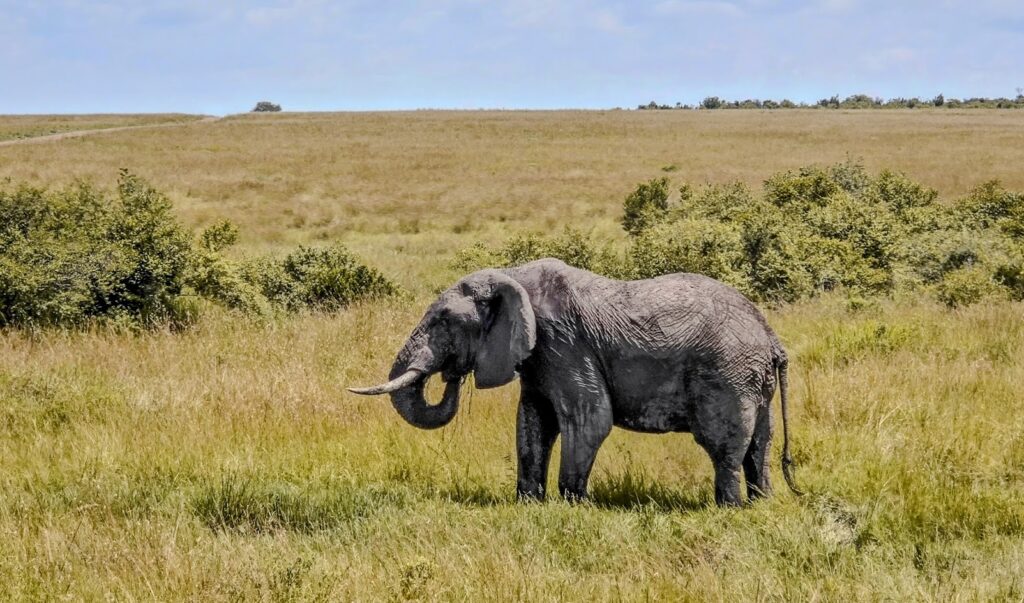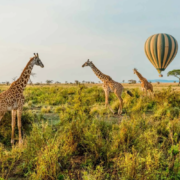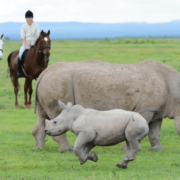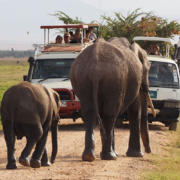
Best Times to Experience a Safari in Kenya
Introduction
Have you ever thought of visiting a destination with countless elements that enrich your safari experience and leave you in awe? Hear this: Statistics revealed by Kenyatraveltips.com indicate that Kenya receives over 2 million international visitors looking for an inspiring safari experience.
So, why Kenya? The answer is simple. Picture yourself witnessing the Great Migration drama of Maasai Mara of wildebeest and zebras. Or encountering the raw beauty of dusty savannah, another natural phenomenon that holds the magic of the Big Five (Elephants, rhinos, hippos, lions, and buffalos).
Timing is crucial when looking for an incredible safari experience. Different seasons dictate vegetation growth patterns and animal migrations. Knowing this rhythm makes planning easier.
This post exposes the intricacies of timing by elaborating on what low and high seasons mean in Kenya’s context. For instance, viewing certain animals during the dry season is easier as they gather around water areas for nourishment.
On the contrary, rainy seasons make some spots inaccessible, limiting unique animal behaviors and attracting few tourists. Keep reading to the end as we reveal the best times to visit Kenya and encounter the most unforgettable and enriching experience. Let’s get started.

Stunning views of an elephant at Amboseli National Park
What Critical Factors Determine the Best Safari Moments in Kenya?
1. Climate and Weather Patterns
Kenya enjoys topographical diversity ranging from savannah grasslands to highlands and coastal regions. This natural boundary influences varying climatic zones, dictating annual animal behavior and vegetation growth.
For instance, the coastal region has a tropical climate, enjoying moderate temperatures with high humidity most of the time. Northern Kenya falls in the arid and semi-arid category, featuring hotter and drier conditions. The central highlands have low temperatures and a more temperate climate, which is a true case for Nairobi.
Generally, the dry season is the best time to visit Kenya since it has minimal rainfall. This season falls between June and October, when the wildlife gathers around water sources, making it easier for visitors to spot them.
If the Great Migration is your target, take advantage of this season. You will encounter spectacular views of wildebeest crossing into Maasai Mara in search of greener pastures.
The wet season manifests from November to December and is characterized by short rains. Similarly, long rains are evident in April to May, causing dispersed wildlife and lush vegetation. Around this season, it can be hard to spot wildlife.
However, the greener vegetation attracts watching birds. In this case, you should understand climate and weather patterns and match them with your viewing goals and priorities.
2. Wildlife Migration and Behavior
One of the most compelling times that offer scenic views to watch wildlife is the famous Great Migration. This annual event sees millions of wildebeest across the Serengeti-Mara ecosystem, showcasing nature’s grandeur.
They begin their grand march in Serengeti National Park in July and go to their fresh destination in Maasai Mara National Park, exploiting the natural resources in October before executing the same circle.
The unique aspect of the Great Migration is that it offers perfect and scenic views of river crossing amidst predators like big cats and crocodiles, maximizing the opportunity to hunt these herds.
Besides, this is a high peak for tourists who flock to Kenya around this puzzle to witness how this drama unfolds. Predators like lions register more success in hunting as they concentrate their mission around waterholes to catch their hunt.
The breeding season coincides with the wet season due to the abundance of food, such as fresh grass, vital to lactating mothers. For example, antelopes give birth during this rainy season, around April to May.
Similarly, birds migrate around the rainy season as they appreciate the wintering ground, creating perfect bird-watching scenes. These birds flock from as far as Asia and Europe.
3. Peak and Off-Peak Seasons
A critical factor in the tourism space is that peak and off-peak seasons dictate how tourists flock to Kenya. The peak season is evident during dry spells; it occurs between July and October and December and February. One key event that coincides with this season is the famous Great Migration.
Besides, it is a coveted season for tourists as little rain makes accessibility to remote areas possible. Again, the tourists can maximize optimal viewing positions for varied wildlife and natural ecosystems.
The limiting issue around this peak season is the high bookings in camps and hotels. Furthermore, there will be a crowding of game reserves and national reserves, leading to higher safari packages and accommodation pricing.
Beyond that, the low or off-peak season occurs around November, April to June. Such a season is synonymous with fewer tourists. The upside concerning this period is that one can get better deals at a lower price, be it accommodation. It is pocket-friendly.
Moreover, the lush green vegetation enhances better sceneries for photography. If seeing newborns is your catch, this is the season to direct your energies to that effect.
The main disadvantage of the low season is that heavy rainfall makes some roads impassable. Still, spotting wildlife could be hard if the animals reside within taller grasses.
4. Location
Kenya is a haven of wildlife distributed in various game parks and reserves to shape your safari experience. In this section, we will enlighten you on some of the top destinations for unforgettable safari tours:
- Maasai Mara Reserve: It is famous for hosting the Great Migration event, a global hotspot that attracts millions of tourists to witness this 8th wonder. Several mammals, such as antelopes, zebras, and wildebeest, migrate from Serengeti to Maasai Mara as they seek to exploit the new environment, which offers year-round viewing opportunities.
More importantly, the game reserve hosts the Big Five and other features like savannah grassland and acacia trees, providing a strategic safari landscape.
- Amboseli Game Park: If you want to see the breathtaking views of Mount Kilimanjaro, this is the destination. The Parks consist of large herds of elephants, cheetahs, lions, giraffes and over 400 species of birds. This wildlife offers iconic African imagery where photographers can take magnificent pictures of animals in their ecosystem.
Even so, their landscapes consist of swamps, dusty plains, woodland, and plains to support various wildlife and bird species.
- Lake Nakuru National Park: The defining moment when you arrive at this destination is the bird-watching spree, where you can explore over 400 bird species. The most spectacular opportunity in this bird’s paradise is to take breathtaking pictures of the flamingos in thousands that envelop the lake.
More so, it is a sanctuary that hosts extinct black and white rhinos, making it a unique haven for safaris if you want to interact with these magnificent creatures.
Other notable creatures are lions, leopards, giraffes, buffalos and warthogs. The alkaline lake hosts the flamingoes and Egyptian geese in their luxury. The terrain mixes valleys, hills, and plains, with woodlands and grasslands supporting various wildlife.
- Samburu National Reserve: It is a unique destination with an arid safari experience. This northern Kenya game reserve is home to gerenuk, giraffes, zebras, and Somali ostriches, among other species. These animals have adapted to this harsh environmental condition for their survival.
More importantly, this wildlife sanctuary has a rocky terrain and acacia woodland. Thankfully, the presence of the Ewaso Nyiro River offers a lifeline where animals seek water for survival. The river-oriented forest perfectly contrasts with the arid landscape, offering scenic ecosystem views.
- Tsavo East and West National Parks: Tsavo East is synonymous with red-dusted elephants. On the contrary, Tsavo West boasts of lava caves, volcanic hills, and Mzima springs. Furthermore, it has a vast wilderness with leopards, lions, rhinos, and rich, eye-catching birdlife.
Specific Wildlife Interests
Knowing the right season to capture raw views of specific wildlife of your interest is critical for a profitable safari experience. Understanding the behavioral patterns of this wildlife should influence your timing to maximize every opportunity. Here is a breakdown of specific wildlife interests to match your timing:
a) Bird Watching
Kenya is a haven for over 1,000 bird species, and it is located in strategic places like Lake Nakuru, Lake Bogoria, and other hot spots. The ripe time to watch these birds in their paradise lies around September and April after the arrival of migratory birds from Asia and Europe.
The resident species are ever-swelling and always available, including Flamingos. Migratory species come when the landscape is lush to support their breeding circle.
b) The Great Migration
The Great Migration is a dramatic event in which hundreds of zebras, gazelles, and a million wildebeest traverse the Maasai Mara and Serengeti to locate better habitats. If river crossing is your motivation, the correct timing is around July to October as they cross the Maasai Mara River.
The Great Migration | Wildebeest Migration | Masai Mara
These scenic moments enhance your safari experience as these mammals cross the crocodile-infested river, attracting thousands of photographers globally to naturally witness these eye-catching events.
c) Big Cats
Big cats, including cheetahs, leopards, and lions, are notable predators in Kenya. The best viewing opportunities occur during the dry seasons, which emerge between January and February and then from June to October.
The Maasai Mara has a high concentration of big cats, and the best times to spot them are in the late afternoon and early morning when their activities are more prevalent during the cooler parts of the day.
d) The Big Five
Most mammals in this category are more visible during dry seasons, especially around water sources. For example, you can watch elephants in several parks year-round.
There are also year-round viewing opportunities for rhinos in Lake Nakuru and other parks, especially during dry seasons. Other species are buffalos, leopards, and giraffes, which live in woodlands and grasslands in different game parks in Kenya.
The Rhinos feed on grass in their natural habitats (IMAGES)
e) Marine Life
The Kenyan coast is rich in water-based tourism, which can offer a spectacular marine safari experience. For instance, spotting whale sharks from October to April is easier. During the East Monsoon season, you can observe these magnificent creatures while diving and snorkelling. The best sights are around Kilifi, Watamu, and Diani Beach.
Moreover, there is a year-round opportunity to watch dolphins around Malindi and Watamu through early morning boat trips to get awe-inspiring views. Coral reefs are other marine life worth watching in Malindi and Watamu, where the best sightings are during the dry season, which ranges from July to October.
f) Tourist Operators and Guides
The role of a guide is to transform a natural ecosystem viewing into a memorable adventure, a virtue of Daylight Adventures & Safari. The company has well-trained tour guides who help you understand different scenarios and appreciate the natural world.
Experienced tour guides enhance your wildlife spotting session due to their vast understanding of animal behaviour, which leads to easier sightings. They have predictive knowledge of locating specific species in their photography habits.
Again, these tour guides prioritize safety, whereby they will guide you on safe human-animal distance to support an optimal viewing experience. Still, these guides may share insights concerning different local cultural experiences and traditions between the wildlife and the residents.
Similarly, reputable tourist operators determine the quality of your safari encounter. A good company should have a fleet of well-equipped and maintained vehicles that can run on any landscape. Furthermore, these operators should have better working relationships with different accommodation providers.
As if that were not enough, the tourist operators should be conversant with itinerary planning that offers the best natural ecosystem and wildlife viewing opportunities year-round.
Lastly, the touring operators should have excellent problem-solving skills to fix any arising challenges amicably. As you plan to exploit your safari moments in Kenya, remember to work hand in hand with Daylight Adventures & Safaris.
What Cultural and Festival Events Attract International Visitors to Kenya?
Kenya is a culturally rich nation that showcases various cultures, attracting foreign visitors who strive to participate. Some of the most notable events around that year are:
1. Lamu Cultural Festival
Undeniably, the Swahili culture of Lamu is one of the key events on this northeastern coast that pulls many tourists around, showcasing the Swahili way of life. It highlights cultural diversity and the rich heritage of traditions occurring around November.
The unique thing about this event is that it blends the African, Indian, Arab and European influences on the local culture. The highlights include dhow racing, where the participants create stunning sights by exploiting the island waters using traditional vessels.
Another eye-catching aspect is the donkey races. Remember, the donkeys are the mode of transport within Lamu Island. Watching these animals race against one another on this car-free island is fun.
Besides, the participants recited Swahili poetry to showcase their rich understanding of the Swahili language, which commands a large audience in East Africa. These recitals offer powerful insights into the oral traditions.
Similarly, if you are a cultural enthusiast, there are music festivals coupled with the famous ngomas and Taarab music that rent the air to inspire your safari moments. Not to forget, Lamu has artisan demonstrations like basket weaving and woodcarvings.
2. The Safari Rally
It began in 1953 to commemorate Queen Elizabeth II’s coronation. It is the most iconic event, and due to its challenging terrain, it is nicknamed the world’s toughest rally.
The participants drive along tough savannah grassland to mountainous regions. They compete against unpredictable weather conditions, traversing rivers and tough roads.
The events attract tourists worldwide who explore this unique event, which occurs yearly. The event follows a unique pattern, testing the vehicle endurance and drivers’ skills and can cover a long distance.
Many top drivers worldwide participate in this Safari Rally event, restoring the international focus on the Kenyan tourism sector. Around this period, high bookings are evident, influencing revenue to the Kenyan economy.
During this period, different automotive companies used this platform to showcase their technology to potential customers who watch these vehicles in action to prove their worth.
Generally, the Safari Rally has cultural significance as it is a chance to celebrate natural beauty. The country uses this event to create conservation awareness as our national heritage.

Safari Rally in Kenya at Naivasha Town
3. The Rusinga Festival
Rusinga is an Island on Lake Victoria where these cultural festivals occur around December. It is an opportunity to showcase the Abasuba cultures, which have unique cultures and languages that attract tourists within and across Kenya.
The key feature of Rusinga Island cultural events is the traditional sports.
You will witness indigenous games like tag of war, spear throwing and wrestling. This hub of activities showcases the Abasuba heritage and promotes its culture on the global stage.
Additionally, this event promotes boat racing activities to send a strong statement on the Abasuba connection with the lake. The good news is that the island rests strategically where such sports can occur, with picturesque views to promote your safari experience.
Besides, the event ends with a cultural exhibition, whereby crafts, clothing, and traditional artefacts are displayed that offer insights into Abasuba artistry and material culture. Traditional cooked foods showcase the delicious lifestyle of the local Abasuba people.
Finally, storytelling sessions strengthen social ties among the Abasuba people. The elders share oral stories and folktales to pass the message to visitors and the younger generation.
4. The Lake Turkana Cultural Festival
Visiting Kenya is about watching wildlife and its natural ecosystems and exploiting its diverse culture, Turkana inclusive. This northern Kenyan event occurs in June or July, bringing together different cultural communities such as Turkana, Rendille, Gabra, Samburu, etc., displaying their traditions and culture.
Some of the highlights of this festival are the traditional dances from different pastoral communities, which reveal their unique traditional dances. For example, every dance has a message tied to daily life, culture or rituals.
Better yet, crafts and artistry is evident during this period. Organizers use this event to display traditional crafts like metalwork, basketry, and beads, highlighting the talent of the local people.
Another aspect of this event is the economic impact on the locals. The events attract local and cross-border tourists who promote their products, such as crafts, and appreciate the local craftsmanship.
Food is a central element of the Turkana cultural festival, where various dishes from many cultures can experience the regional delicacy. For example, one can opt for the locally roasted goat or get the fish for the lake and vegetable flavours from the same region.
5. The Rhino Charge
Rhino Charge is an important fund organizer for conserving the Aberdare ecosystem, attracting various enthusiasts globally. The event began in 1989 and has had a great impact on conservation efforts in the preceding years.
This event’s main focus is to enrich the Rhino Ark Charitable Trust, which preserves mountain ecosystems. These funds support fencing the Aberdare forest to eliminate the human-wildlife conflict and energize reforestation efforts.
Furthermore, the organizer implemented the competition format, focusing on the 4by four vehicles which cruise through a tough terrain timed to reach various checkpoints within the allocated time. The challenge is for the drivers to use the shortest unmarked distance to arrive at their set checkpoint.
More so, this event is a blessing to the local community as it raises conservation awareness and offers the locals economic opportunities. Engaging the local community strategically has many benefits, including positive economic impacts.
Ultimately, the Rhino Charge event promotes adventure tourism by attracting interest groups worldwide who use the platform to promote their conservation efforts.
In Conclusion
At last, your plan to land in Kenya is ripe. What influences your coming is the proper timing of the unfolding events based on your preferences. For instance, if bird watching is your attraction, you can visit during the wet season when different species from Asia and Europe gather to exploit the lush environment.
Moreover, suppose your catch is to take scenic views of the special migration of wildebeests from Serengeti to Mara ecosystems, then implement your plan around dry seasons. Similarly, cultural enthusiasts can liaise with Daylight Adventures & Safaris to offer insights about the cultural calendar among different communities in Kenya.
The secret to a successful safari experience is planning as you engage with Daylight Adventures & Safaris to offer you the right logistics to enhance your tour throughout your areas of interest.
In addition, it is vital to be flexible, enjoy spontaneous experiences along your trips, and maximize every opportunity to have a memorable safari trip to Kenya. Daylight Adventures & Safaris comes to your rescue. Want a safari tailored just for you? Inquire now for a personalized safari experience designed to match your unique interests and needs with Daylight Adventures!




